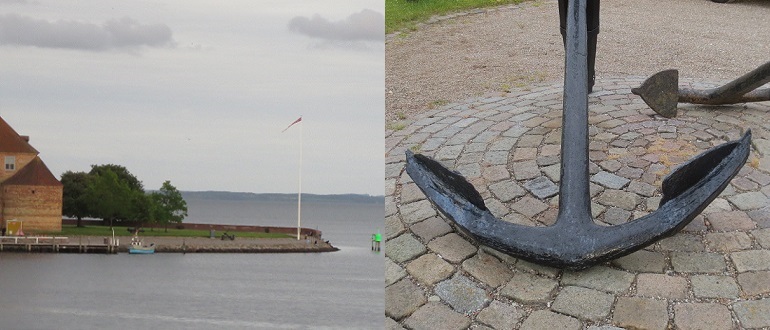Panel at the 14th International Pragmatics Conference (IPrA 2015), Antwerp, Belgium
Anchoring utterances in co(n)text, argumentation, common ground
Organizers: Kerstin Fischer & Maria Alm
In this panel, we investigate how linguistic items from primarily different grammatical classes serve to anchor their host utterances in context. The items considered comprise, for instance, modal particles, discourse markers, conjunctional adverbs, "mots de discours" etc. On the one hand, we wish to address what aspects of context are being evoked, such as common ground, argumentation, discourse record, context of situation or cotext, and on the other hand what surface (grammatical) cues there are that can guide listeners during interpretation. For example, Diewald/Fischer (1998) and Diewald (2006) argue that German modal particles refer to an argumentative background with respect to which the current utterance is positioned as non-initial, i.e. as a natural consequence of what happened before. This function they understand as the grammatical function of modal particles, a particle class which occurs in a specific middle field position. In German, this particle class is contrasted with discourse particles, which occur outside sentence boundaries and whose grammatical functions concern the anchoring of talk in the currently on-going communicative situation (cf. also Fischer 2006). However, obviously other languages work differently; for instance, English conjunctions, such as and, have been found to anchor questions in larger activities (Heritage & Sorjonen 1994). Furthermore, for French discourse markers both discourse management and argumentative functions have been found (Mosegaard Hansen 1998, Nemo 2006, Nølke 2013). So we want to discuss, for instance
-
what means different languages provide to anchor a current utterance in context
-
what different aspects of context are evoked and how they are best accounted for (e.g. if Clark’s (1996) typology of common ground is suitable to account for the kinds of contexts evoked)
-
whether different languages distinguish between different aspects of context evoked grammatically, and
-
whether specific contextual features may be connected to the grammaticalization path of some of these discursive expressions, e.g. subjective and intersubjective features (see Traugott 2012, Beeching & Detges, in press).
References
-
Beeching, Kate and Ulrich Detges (eds. Forthcoming): The Role of the Left and Right Periphery in Semantic Change. Amsterdam: Benjamins.
-
Clark, H. H. (1996): Using Language. Cambridge University Press.
-
Diewald, Gabriele (2006): Discourse particles and modal particles as grammatical elements. In: Fischer, Kerstin (ed.): Approaches to Discourse Particles. Amsterdam: Elsevier, 403-426.
-
Fischer, Kerstin (2000): From Cognitive Semantics to Lexical Pragmatics: The Functional Polysemy of Discourse Particles. Berlin/New York: Mouton de Gruyter.
-
Fischer, Kerstin. (2006): Frames, constructions, and invariant meanings: the functional polysemy of discourse particles. In Fischer, Kerstin (ed): Approaches to Discourse Particles. Amsterdam: Elsevier, 427-448.
-
Fischer, Kerstin (2007): Grounding and Common Ground: Modal particles and their translation equivalents. In: Fetzer, Anita/Fischer, Kerstin (eds): Lexical Markers of Common Grounds. Studies in Pragmatics 3. Amsterdam: Elsevier.
-
Heritage, John/Sorjonen, Marja-Leena (1994): Constituting and Maintaining Activities across Sequences: And-Prefacing as a Feature of Question Design. In: Language in Society 23, 1-29.
-
Mosegaard Hansen, Maj-Britt (1998): The Semantic Status of Discourse Markers. In: Lingua 104, 235-260.
-
Nemo, Francois (2006): Discourse particles as morphemes and as constructions. In: Fischer, Kerstin (ed.): Approaches to Discourse Particles. Amsterdam: Elsevier, 375-402.
-
Nølke, Henning (2013): Modalité, focalisation et polyphonie: l''exemple de peut-etre. In: Gévaudan, Paul/Detges, Ulrich/Atayan, Vahram (eds.): Modalität und Polyphonie. Modalité et polyphonie. Modalidad y polyfonía. Tübingen: Stauffenburg, 127-140.
- Traugott, Elizabeth (2012): Intersubjectification and clause periphery. In Brems, Lieselotte/Ghesquière, Lobke/Van de Velde, Freek (eds.): Intersections of Intersubjectivity: Special Issue of English Text Construction 5, 7-28.
Program
Monday, July 27
| 08.30-10.00 | Introduction |
| Kerstin Fischer (University of Southern Denmark): Final Particles in English Anchor Utterances in Argumentative Common Ground |
|
| Francois Nemo (University of Orleans): What is Said about What is Said: Accounting for Discourse Modifiers |
|
| 10.30-12.00 | Helena Larsen & Maria Alm (University of Southern Denmark): Modal Particles as Indicators of Common Ground – or What? |
| Eva Skafte Jensen (Danish Language Council): First, Second and Third Person Modal Particles in Danish Text Messages |
|
| Narita Mitsuko Izutzu & Katsunobu Izutsu (Fuji Women's University & Hokkaido University of Education): Cancelation, Confirmation, and Establishment: Three Facets of Grounding Marked by Japanese Final Particles |
|
| 13.30-15.00 | Thanh Nyan (University of Manchester): Anchoring Argumentative Utterances to Context: An Adaptive View |
| Liesbeth Degand & Natalia Levshina (University of Louvain): "Just Because": In Search of an Objective Approach to Subjectivity |
|
| Salvador Pons Borderia (University of Valencia): The Combination of Discoure Markers: Some Remarks to Solve a Hidden Issue |
|
| 15.30-17.00 | Maria Josep Cuenca (University of Valencia): Lexical Connectives as Grounding Devices in Political Discourse |
| Fergal Treanor (University of Antwerp): Questioning Activity Types |
|
| Carolin Hofmockel & Anita Fetzer (University of Augsburg): "But You Know He is But": Negotiating Discourse Common Ground across Contexts. |
|
| 17.15-18.45 | Catherine Bolly & Ludivine Crible (University of Louvain): From Context to Functions and Back Again: Disambiguating Pragmatic Uses of Discourse Markers |
| Discussion Discussants: Gabriele Diewald (Leibniz University Hanover), Elizabeth Traugott (Stanford University) |
